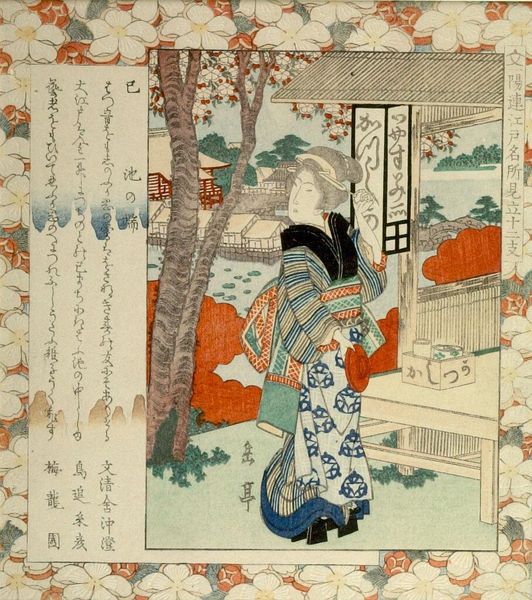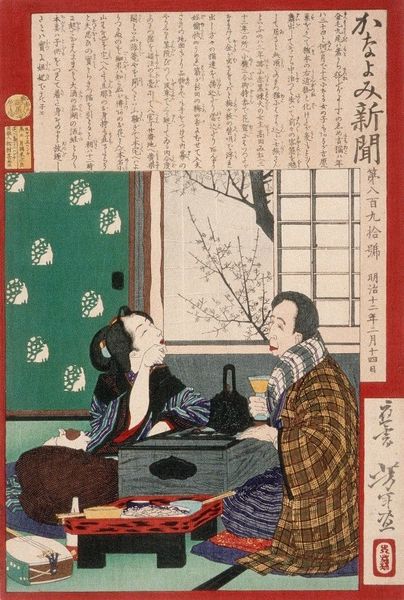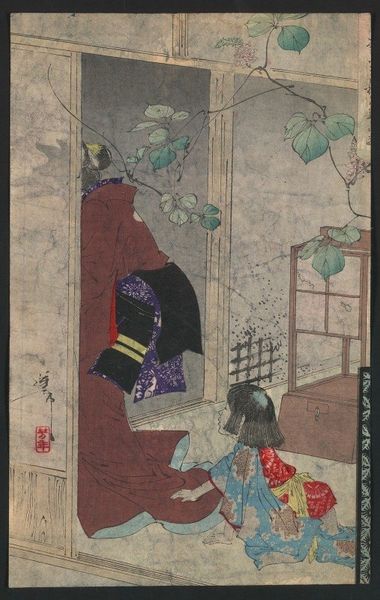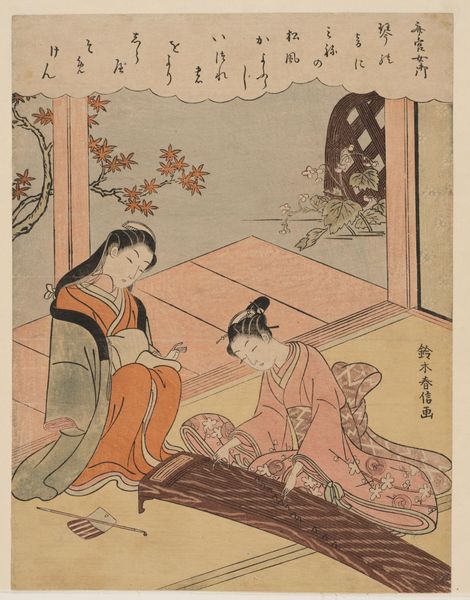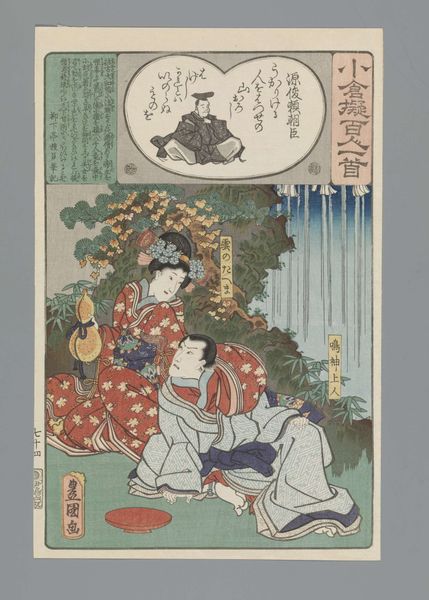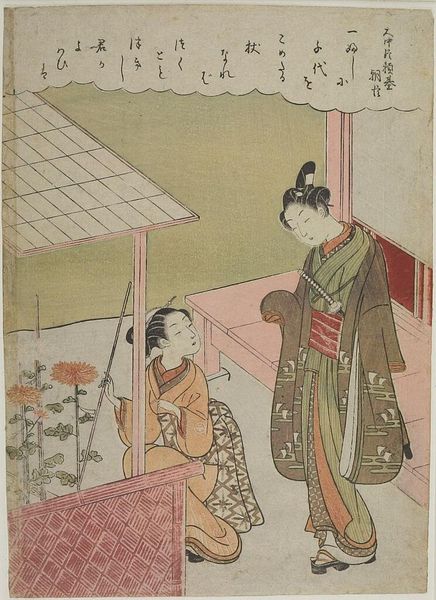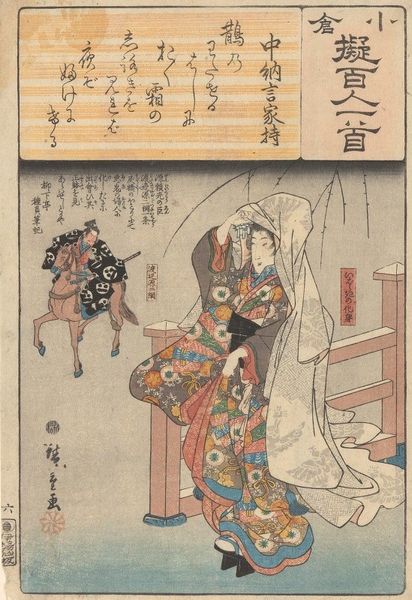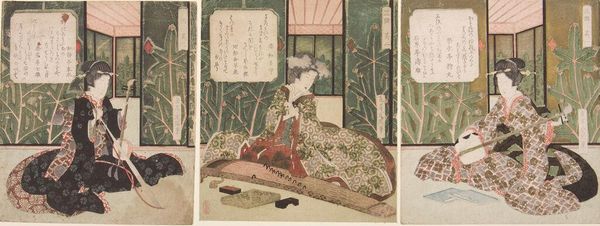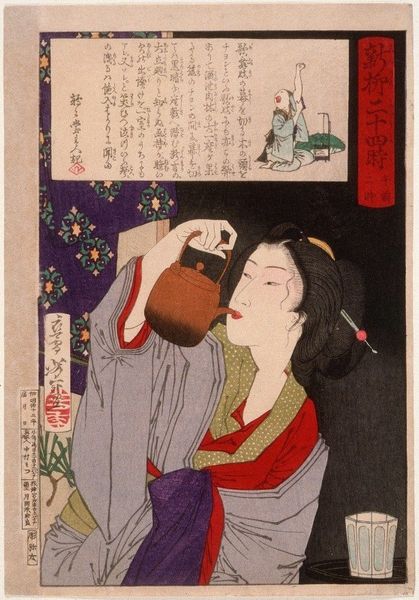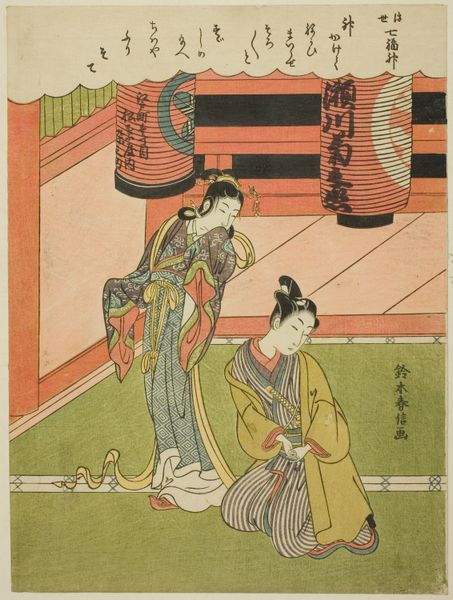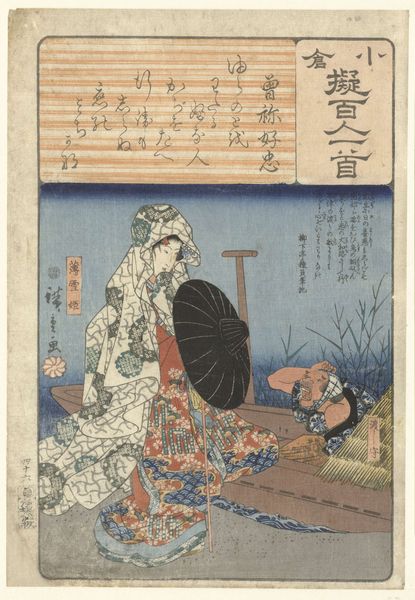
Copyright: Public Domain: Artvee
Tsukioka Yoshitoshi made this woodblock print, “A Widower Witnesses His Wife’s Ghost Nursing Their Child,” in nineteenth-century Japan, a period of rapid social and cultural transformation. This image from a series titled “New Forms of Thirty-six Ghosts” reflects the Meiji era’s complex relationship with tradition and modernity. On one hand, Japan was embracing Western science and technology. But, on the other, there was a resurgence of interest in folklore and the supernatural. Yoshitoshi, working within the traditional ukiyo-e style, portrays a scene that blends the everyday with the spectral. The print is part of a larger institutional history, that of the popular press. The text in the upper left suggests that this print was associated with a newspaper, signaling the commodification of ghost stories for mass consumption. Historians might look to newspaper archives and social histories of the Meiji era to further understand the meaning and significance of this kind of imagery. Art provides a window onto the social anxieties of its time, and its interpretation is contingent on the historical context in which it was made and consumed.
Comments
No comments
Be the first to comment and join the conversation on the ultimate creative platform.
